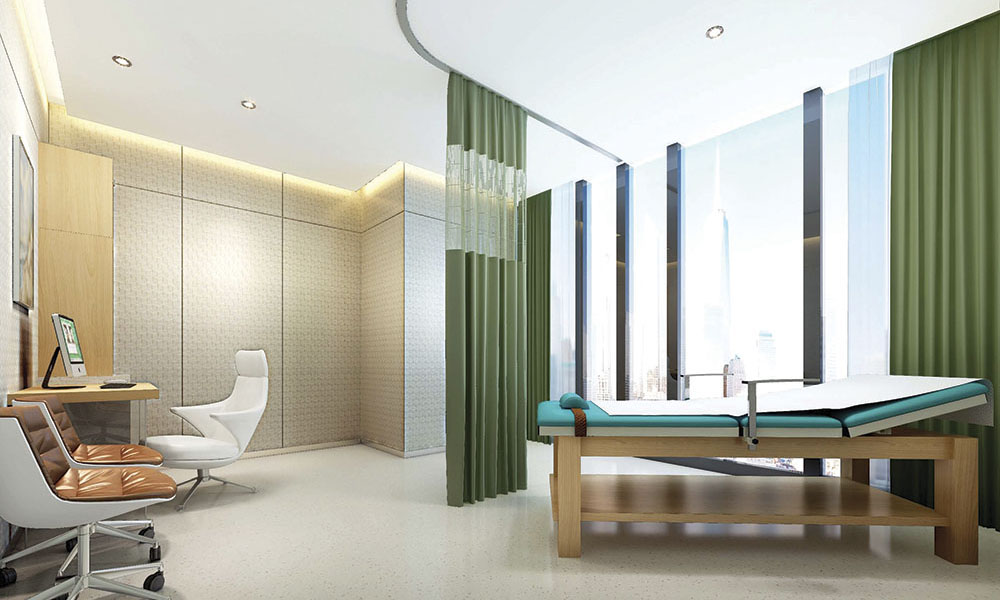China’s population is going through a number of shifts, including aging communities, higher standards of living and a growing young, urban middle class. For the country’s healthcare system, that also means challenges in meeting the needs of care and providing quality services.
As standards of living begin to rise, hospitals in China are changing direction toward a more patient-focused design philosophy to keep up with the quality and high standards of care people are seeking. While healthcare in China is generally run by the government, private developers are also beginning to take part in the market by building private hospitals and looking for ways to provide the population with improved care and more options.
As the private sector becomes more involved in healthcare, they are also using their experience in other sectors, such as retail and commercial, by looking for ways to make the built environment more culturally relevant. In the past, healthcare in China has focused on the masses with the intent to raise the standard for everyone. This scientific approach in healthcare prevailed in the west due in part to the adoption of the scientific method to solve problems.
The scientific method is largely based on the belief that through a process of inquiry, any problem can be distilled down to its prime components. Once discovered and treated, the problem ceases to exist, or a “cure” is found. As admirable and necessary as this approach was, the new generation is pushing to transform healthcare into a more balanced and holistic approach — one that is more relevant to their needs.
Balance as a top priority
Ultimately, the scientific method focuses on the treatment as a cause/effect relationship, and not the consequences of the applied treatment within the overall context of the patient’s well-being.
In the east, balance in all things is a life-long objective and, as such, balance must take into consideration many factors that the scientific method would consider inconsequential to the objective of the treatment. Balance is also at the forefront in the minds of the new generation of healthcare developers/consumers and has been strengthened by the understanding that the application of healthcare must be done with a parallel understanding of the context.
Learning from the private sector
The private sector can bring a unique perspective to the market, especially given its connection to fulfilling consumers’ needs in the retail/commercial realm. Understanding the desires of the population they serve, the private sector goes beyond the delivery of clinical care and addresses the preventive health concept as part of their overall strategy to provide a responsive and holistic healthcare system. Thus the appearance of wellness centers and health promotion centers are examples of the shift toward wellness and the preventive health concept.
Wellness centers support wellness initiatives and promote a healthy lifestyle. These facilities are developed to make the acute care part of the hospital more effective by helping patients avoid lifestyle choices that negatively affect their health. They will also help patients transition back into the community after a hospital stay.
For a recent health promotion center in Hangzhou, China, CallisonRTKL’s design inspired the community to really care about their health. People in China are already focused on wellness as part of their daily routine, and this center upholds this goal and brings a more culturally relevant healthcare standard to China. The design of the center has more of a contemporary feel but also fits in with local and cultural characteristics. The design elements fuse to focus on the patient, providing the community with a positive healthcare experience and a new standard of care.
Focus on community
It is important for the facility to be embedded into the community, a place where people can congregate and complete some of their daily tasks, like picking up groceries or medicine, as part of the overall healthcare concept. Features not normally found within a healthcare facility have become essential to creating a connection with the community. As an example, an outdoor amphitheater was implemented for one community, providing a source of entertainment the community could use on a daily basis outside of healthcare services.
This trend is also happening in other countries such as Japan, where at Tokyo Bay Rehab Hospital a piano placed in the atrium space provides a pianist residing in the neighborhood a place to play, which he repays by providing a relaxing atmosphere, as well as a pleasant distraction to those within. Creating such situations allows for these types of moments to affirm the connection with the community. Many in the private sector see the designer as a partner in shaping their vision of place and community and will promote healthcare, not as an added amenity, but as an essential part of the community fabric.
Like anywhere else, each healthcare project in China is unique and China is on the cusp of a new era for healthcare that will bridge the gap between pragmatic, acute care and an overall focus on wellness and preventive medicine. Given time, there is no doubt that the new generation of private sector healthcare clients will bring China to the forefront of health and wellness.





